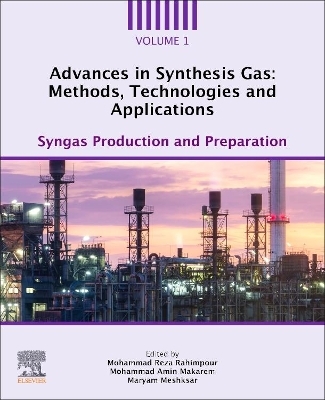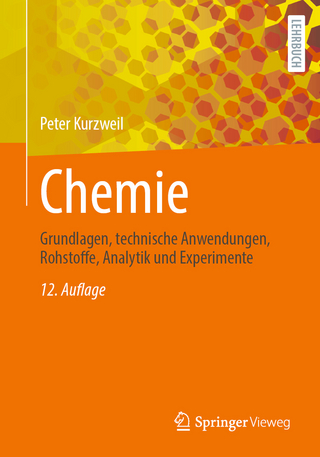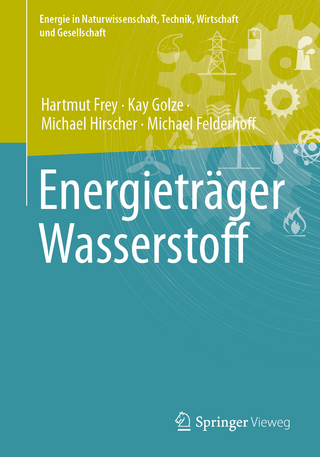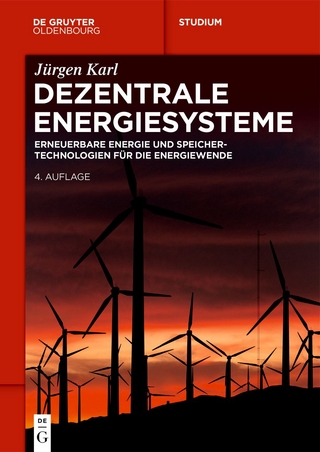
Advances in Synthesis Gas: Methods, Technologies and Applications
Elsevier - Health Sciences Division (Verlag)
978-0-323-91871-8 (ISBN)
Prof. Mohammad Reza Rahimpour is a professor in Chemical Engineering at Shiraz University, Iran. He received his Ph.D. in Chemical Engineering from Shiraz University joint with University of Sydney, Australia 1988. He started his independent career as Assistant Professor in September 1998 at Shiraz University. Prof. M.R. Rahimpour, was a Research Associate at University of California, Davis from 2012 till 2017. During his stay in University of California, he developed different reaction networks and catalytic processes such as thermal and plasma reactors for upgrading of lignin bio-oil to biofuel with collaboration of UCDAVIS. He has been a Chair of Department of Chemical Engineering at Shiraz University from 2005 till 2009 and from 2015 till 2020. Prof. M.R. Rahimpour leads a research group in fuel processing technology focused on the catalytic conversion of fossil fuels such as natural gas, and renewable fuels such as bio-oils derived from lignin to valuable energy sources. He provides young distinguished scholars with perfect educational opportunities in both experimental methods and theoretical tools in developing countries to investigate in-depth research in the various field of chemical engineering including carbon capture, chemical looping, membrane separation, storage and utilization technologies, novel technologies for natural gas conversion and improving the energy efficiency in the production and use of natural gas industries. Dr. Mohammad Amin Makarem is a research associate at Taylor's University, Malaysia. He former worked at Shiraz University. His research interests are gas separation and purification, nanofluids, microfluidics, catalyst synthesis, reactor design and green energy. In gas separation, his focus is on experimental and theoretical investigation and optimization of pressure swing adsorption process, and in the gas purification field, he is working on novel technologies such as microchannels. Recently, he has investigated methods of synthesizing bio-template nanomaterials and catalysts. Besides, he has collaborated in writing and editing various books and book-chapters for famous publishers such as Elsevier, Springer and Wiley, as well as guest editing journals special issues. Maryam Meshksar is a research associate at Shiraz University. Her research has focused on gas separation, clean energy, and catalyst synthesis. In gas separation, she is working on membrane separation process, and in the clean energy field, she has worked on different reforming-based processes for syngas production from methane experimentally. She has also synthesized novel catalysts for these processes which are tested in for the first time. Besides, she has reviewed novel technologies like microchannels for energy production. Recently, she has written various book-chapters for famous publishers such as Elsevier, Springer, and Wiley.
Section I: Syngas Production Processes and Technologies
1. Syngas characteristics; physical and chemical properties
2. Syngas production by gasification processes
3. Pyrolysis process for syngas production
4. Steam reforming processes for syngas production
5. Dry reforming processes for syngas production
6. Autothermal and tri-reforming for syngas production
7. Chemical looping reforming for syngas production
8. Microwave-assisted reforming for syngas production
9. Partial oxidation process for syngas production
10. Electrolysis process for syngas production
11. Photocatalytic process for syngas production
12. Membrane technology for syngas production
13. Micro-channel reactor technology for syngas production
14. Plasma technology for syngas production
Section II: Syngas Production Sources
15. Syngas from coal
16. Syngas from agricultural waste
17. Syngas from wood and cardboard waste
18. Syngas from food waste
19. Syngas from plastic waste
20. Syngas from black liquor
21. Syngas from microalgae
22. Syngas from lignin
| Erscheinungsdatum | 21.10.2022 |
|---|---|
| Verlagsort | Philadelphia |
| Sprache | englisch |
| Maße | 191 x 235 mm |
| Gewicht | 1200 g |
| Themenwelt | Naturwissenschaften ► Chemie ► Technische Chemie |
| Technik ► Umwelttechnik / Biotechnologie | |
| ISBN-10 | 0-323-91871-9 / 0323918719 |
| ISBN-13 | 978-0-323-91871-8 / 9780323918718 |
| Zustand | Neuware |
| Informationen gemäß Produktsicherheitsverordnung (GPSR) | |
| Haben Sie eine Frage zum Produkt? |
aus dem Bereich


